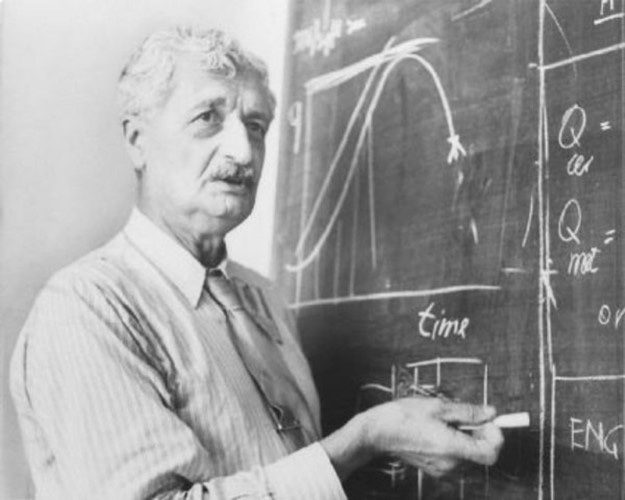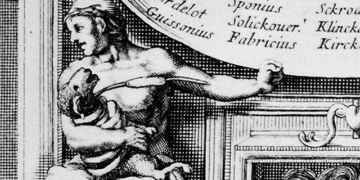During World War II, the Nazi regime demonstrated a determination to gain an advantage in weaponry. They developed fighter planes, bombers, ballistic missiles (V-2), and cruise missiles (V-1)…
Especially in the final stages of the war, with defeat imminent, German scientists were ordered to urgently execute the Wunderwaffe project, or “Wonder Weapon”, one of which was the “Death Ray” attacking enemies from space.
From Peaceful Ideas to Deadly Weapons
Article about Germany’s “Death Ray” published in Life magazine in 1945.
Many plans for Nazi superweapons were not revealed until their surrender in 1945. Prior to that, Allied forces tirelessly hunted for weapons manufacturing facilities within Germany. Notably, a raid on the testing sites of the German Army’s Artillery Corps in Hillersleben, Germany, uncovered many peculiarities.
Hidden among the hills near the town, this vast facility housed over 150 engineers and physicists working day and night to devise new weapon production methods during the war.
Among the many plans discovered, significant ideas included stealth bombers, the first giant armored tanks, vertically taking off and landing flying saucers, infrared beam devices… along with many other bold designs. All were in prototype form and had not yet entered actual production. However, one of the plans that garnered special attention was the design for an orbital space station and the “Death Ray.”
Known as Sonnengewehr, or “Sun Gun”, this weapon was initially the brainchild of German rocket scientist Hermann Oberth, conceived in 1923. His idea was a peaceful invention.
It consisted of a “space mirror” capable of providing light for ports, melting frozen rivers, generating electricity, placed on a space station or manned satellite at an altitude of one thousand kilometers, referred to as Raumstations.
He not only envisioned the layout of these space stations but also had detailed plans regarding the necessary engineering and construction materials, even methods for resupplying the station via rockets.
All of this was ahead of its time, at a period when space travel was still a figment of imagination. However, the Nazis soon recognized the destructive potential of this idea and began implementing plans to create their own Death Star project.
German scientists considered building a space station for war purposes. It was planned to be placed 8,200 kilometers from Earth, equipped with solar-powered devices, as well as hydroponic gardens containing thousands of pumpkin plants for oxygen production, where the crew would live in specially constructed living quarters on the station.
This was an era when humankind had yet to put anything into orbit, let alone a massive manned space station. Nevertheless, the Nazis claimed they could have this station operational within 15 to 25 years. At that point, it would become a military base with various “Death Weapons”, collectively referred to as the “Sun Gun”.
The “Sun Gun” was envisioned as a gigantic mirror made of metallic sodium, covering an area of 9 square kilometers, to be mounted on the space station. Essentially, this mirror would function by focusing sunlight into an extremely powerful beam directed at Earth, generating immense heat.
Theoretically, it could boil oceans, evaporate lakes, incinerate fields, and obliterate entire cities. With a seemingly infinite supply of “ammunition” provided by sunlight, there would be no way for adversaries to counter it.

German scientist Hermann Oberth with the idea of using “space mirrors” for humanity.
The Failed Project
This was not the first time the sun had been “weaponized” with high destructive capability. Since the 3rd century BC, the ancient Greek engineer and mathematician Archimedes, in the city-state of Syracuse, was known for creating various war machines to combat the Romans, such as catapults and even a giant metal claw to block and sink ships.
Among these complex weapons, the “Archimedes Death Ray” was considered highly effective. It consisted of a series of gigantic mirrors arranged to capture and concentrate sunlight with intense intensity, then direct it towards Roman ships, igniting them from a distance of 300 meters.
However, over the centuries, all documents related to this weapon and its construction methods have been lost. The fact remains that the “Archimedes Death Ray” was not regarded as a widely used or popular weapon, and it has only been mentioned a few times in limited literature.
It seems that the Nazis did not have much luck with their plan to turn sunlight into a destructive weapon, as the war ended before it could be developed.
After the war, Hermann Oberth moved to America, continuing his rocket research and contributing to the activation of the American space program in the 1950s. Oberth also did not abandon his intention to harness solar power, and by the end of 1961, he proposed a gigantic mirror made from materials mined from the Moon, theoretically capable of restoring normal life to frozen regions. However, his idea did not receive much attention.
Did the Nazis truly pursue such a concerning plan? If we only consider information about the “Sun Ray” from the 1945 Life magazine article titled The German Space Mirror, it cannot be determined for sure.
However, it cannot be denied that the Nazis conducted groundbreaking research during the war. Therefore, this plan was not entirely delusional, adding to the mystery surrounding Nazi science during World War II.




















































